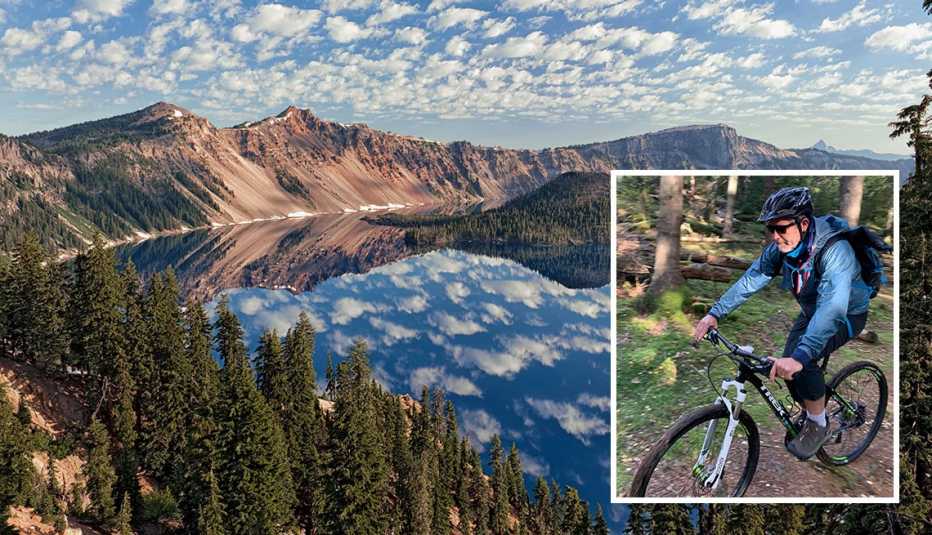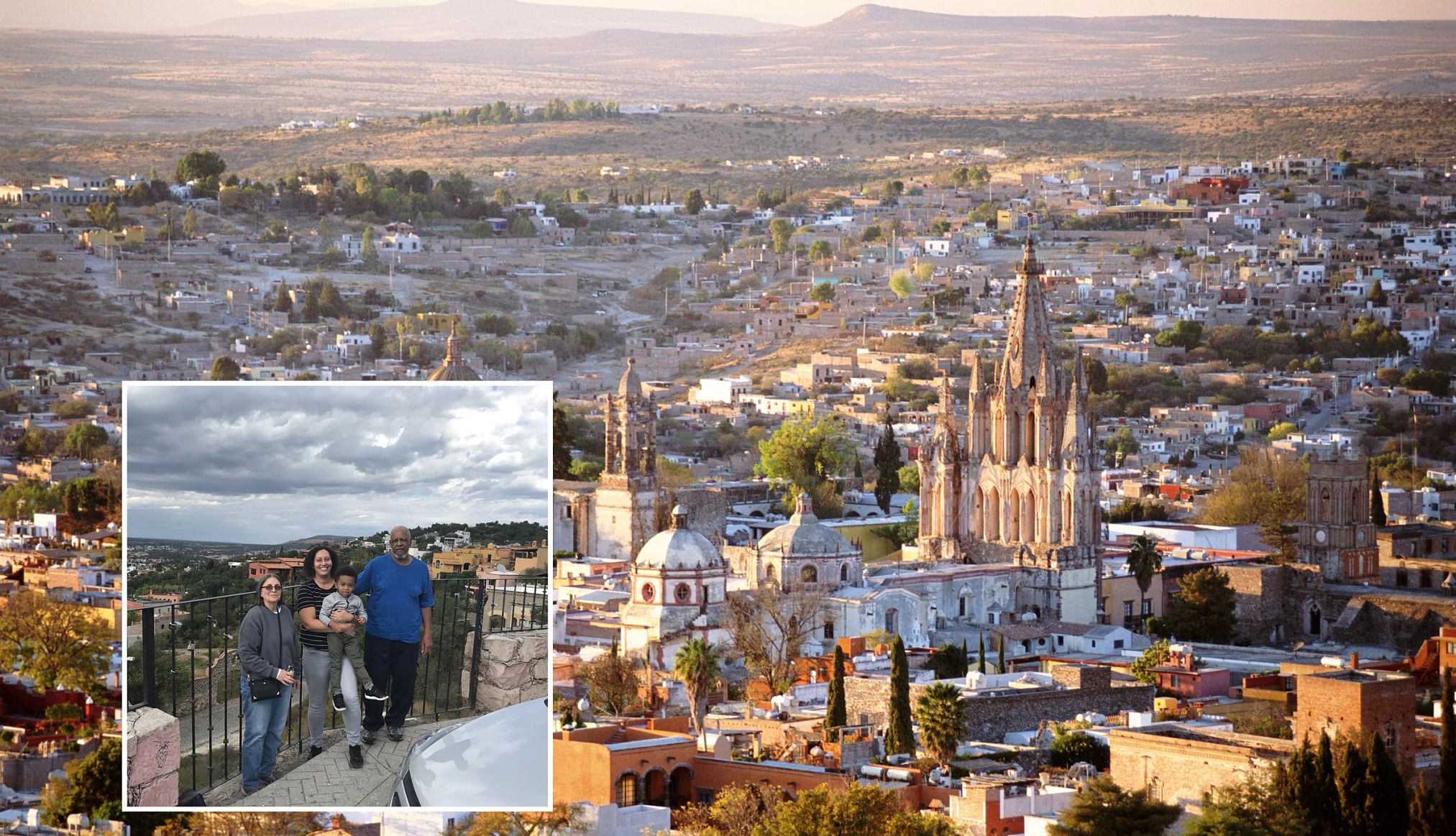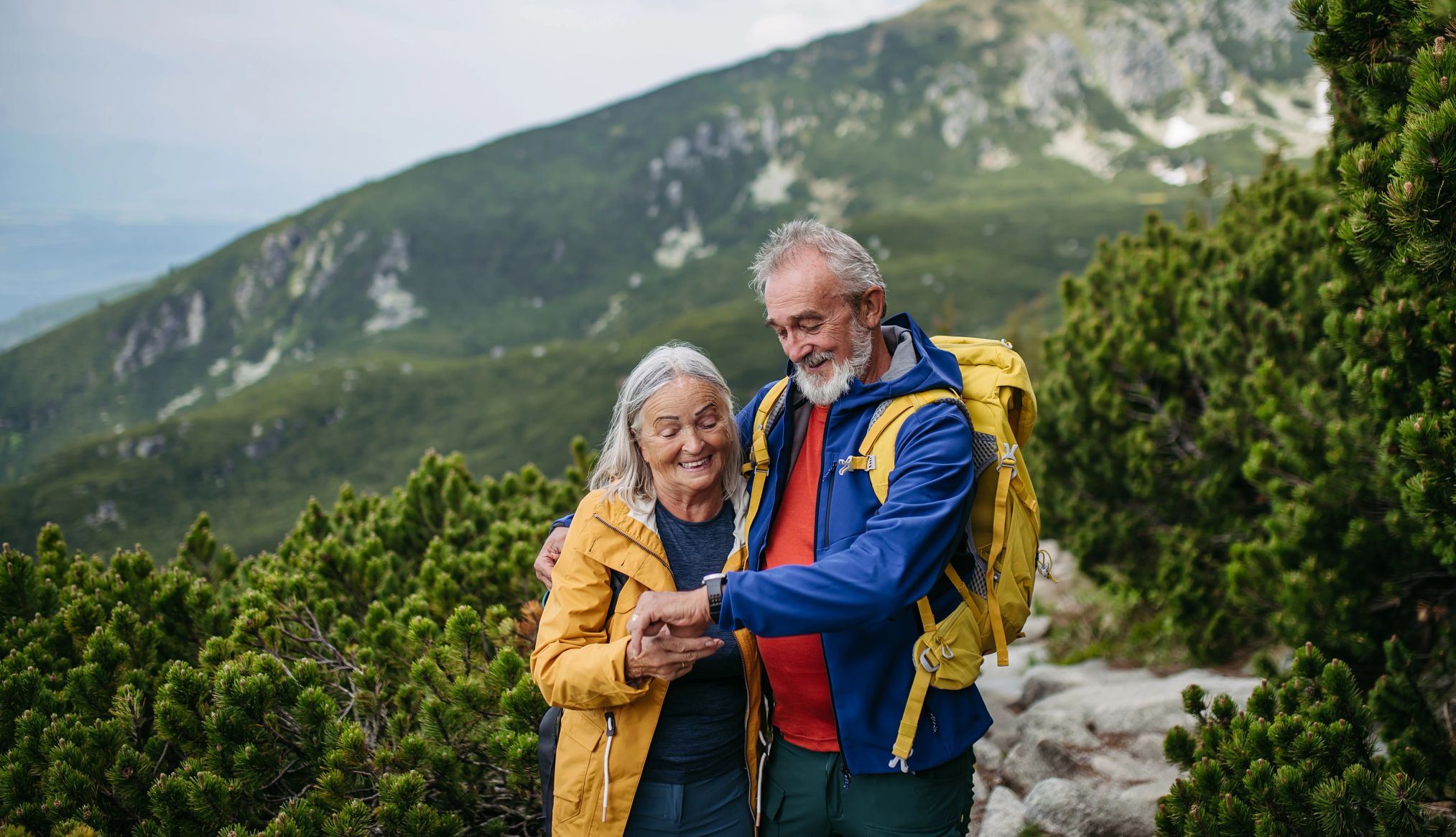AARP Hearing Center
In this story
U.S. Civil Rights Trail from Birmingham to Montgomery, Alabama | Bend, Oregon, to Crater Lake National Park, Oregon | Mexico City to San Miguel de Allende, Mexico | Hanover to Plainfield, New Hampshire | Duluth to Grand Marais, Minnesota | Fairbanks to Anchorage, Alaska | Lake Tahoe scenic drive, Lake Tahoe, California
Fall is a magical time of year. When the temperatures start to cool and the leaves begin to turn colors, it’s easy to feel inspired to get out and witness the change of the season.
Here, seven travel writers describe their favorite road trips that stand out during the fall. According to the latest AARP Travel Trends survey, 43 percent of travelers 50-plus planned to travel by personal vehicle this year. Start planning your autumn adventure now.
U.S. Civil Rights Trail, from Birmingham to Montgomery, Alabama
In 2018, the year my son Cameron turned 13, I took him to Alabama. Martin Luther King Jr. quotes rolled out across his screens at key times of the year, but Cameron lacked any real grasp of the magnitude of the civil rights era. I was worried something was being lost, so when the opportunity to visit the state presented itself, I took him on a road trip through Birmingham and Montgomery.
The timing was perfect. The U.S. Civil Rights Trail had just launched. Today it includes more than 130 sites across 15 states and the District of Columbia. Our drive from Huntsville to Montgomery was easy enough.
The violent racial history of America wasn’t new to me, as part of a Black family, but it was comforting that alongside houses and trucks bearing Confederate flags, I saw bumper stickers calling for civil rights protections. Cameron was oblivious to most of that. In full control of our travel playlist, he remained firmly focused on what was happening inside the car. I envied his innocence. That innocence was interrupted in Birmingham.
Barry McNealy of the Birmingham Civil Rights Institute gave us a tour through the 16th Street Baptist Church and shared the story of the four schoolgirls — Addie Mae Collins, Cynthia Wesley, Carole Robertson and Denise McNair — killed by a Ku Klux Klan bombing as they prepared for Sunday school on Sept. 15, 1963.
They were about Cameron’s age at the time of their death — a fact that hit us both hard. Across the street at Kelly Ingram Park, we saw sculptures and monuments meant to help visitors understand and remember the impact and sacrifice of youth during the movement. The long history of young activists changing the world wasn’t lost on my boy, who in the years to come would become an activist in his own right. Cameron still points to that day with McNealy as his favorite of our time together.
The learning continued in Montgomery and brought out a mix of emotions. We stood in awe at King’s pulpit at Dexter Avenue King Memorial Baptist Church and visited the home he lived in with his family from 1954 to 1960. We explored the Rosa Parks Museum, set in the very spot where she was famously arrested for refusing to give up her bus seat, and we marveled at her fortitude.
Perhaps the most emotional moment of our trip came at one of our last stops: a visit to Montgomery’s National Memorial for Peace and Justice. There, as you walk through, 800 6-foot columns increase in distance from the ground. By the time you reach the middle of the memorial for lynching victims, the pillars are dangling above you. The image of my little boy walking beneath the hanging pillars haunts me still.
My son, perpetually happy and with swinging arms and a bright smile, asked me questions on that trip that I had no answers to. I was grateful for the stops for tasty dinners, a space museum and butterfly-filled gardens across the state, for the space to discuss and deconstruct all that we were seeing. Grateful too that we’d opted for a bite-size introduction for this heavy experience.
Heather Greenwood Davis is a travel writer and TV personality based in Toronto.


Bend, Oregon, to Crater Lake National Park, Oregon
Bend straddles the Deschutes River in the high desert, within the shadow of the Cascade Mountains to the west and the northern edge of the Great Basin to the east.
I first passed through Bend in the late 1980s. The logging town served as my last bastion of civilization (i.e., decent beer) before I headed off to study migratory birds at Malheur National Wildlife Refuge, 162 miles to the east. Relocating to Bend never crossed my mind. Fast-forward 35 years and it’s all I think about whenever I visit.
It isn’t just the decent beer, which is now beyond decent and on tap in more than 30 breweries across the city. It’s the endless amount of outdoor recreation surrounding the city.
Usually when I’m in town, I tackle the “Bend Trifecta”: gravel biking along a trail to fly-fish near Lava Island Falls on the Deschutes River after a morning round of golf at the Tetherow golf course. But one day I decided to switch things up and make the drive to Crater Lake National Park.
Highway 97 offers the most direct route to Crater Lake, but I took my time — adding about four hours — to explore the 66-mile Cascade Lakes National Scenic Byway (Forest Route 46) from Bend to Crescent. The route winds past lakes, Cascade peaks and meadows filled with Douglas asters and other seasonal wildflowers. From Crescent, I followed Highway 97 for 43 miles to the national park.
Crater Lake is the deepest lake in America, about 1,943 feet. The partially filled caldera formed when Mount Mazama imploded 7,700 years ago. Surrounded by mountain peaks, many capped with freshly fallen snow, the lake can be seen from 30 overlooks along Rim Drive. It’s easy to spend hours stopping at uncrowded overlooks for different views of the water. I hiked the advanced 1.1-mile Cleetwood Cove Trail down to the lake’s shore, where I could easily lose myself in the cerulean water.
At sunset, the autumn chill, downright cool on Rim Drive at 6,560 feet, meant it was time to head to the Crater Lake Lodge, a grand timber structure that opened in 1915. Like other Western national park lodges, it’s known for its dining room with astounding views. But Crater Lake Lodge may offer the best vista of all the lodges. My pan-roasted steelhead trout dinner is somewhat lost in the sapphire blue water shimmering in the autumn breeze below me.
Crai S. Bower writes and photographs stories for numerous publications, including EnRoute, AAA Journey and The Saturday Evening Post.


Mexico City to San Miguel de Allende, Mexico
My eyes darted back and forth between the serene hills of Mexico’s Central Highlands and the highway that cut a winding path between the arched peaks. It was mid-November 2019, and my 3-year-old son was in his car seat in the back of the rental car, my mom sitting next to him. My dad sat in the front passenger seat next to me. The drive began on a bustling freeway, but traffic slackened as we got further into it.
I was doing my best to drive cautiously, to put my parents at ease as I drove through a foreign country, but I couldn’t help but occasionally peek at the arid terrain around us. Inside the car, the mood was full of anticipatory excitement. Keeping a 3-year-old occupied with songs and toys was the focus, but thoughts remained on reaching the destination ahead.
We’d left the busy highways of Mexico City after a brief stay, before driving about four hours north toward the real purpose of our trip. For my parents, the road to San Miguel de Allende represented a nostalgic drive through the memory of their early years together. I was tagging along to merely soak up some of their world before I came into it.
In the late 1970s, before I was born, my parents moved to Durango, Mexico. My mom taught first grade, and my dad coached basketball. A successful championship win at their first school led to a job opportunity at the private American school in Querétaro. When they moved, they chose to live an hour north in the historic town of San Miguel.









































































